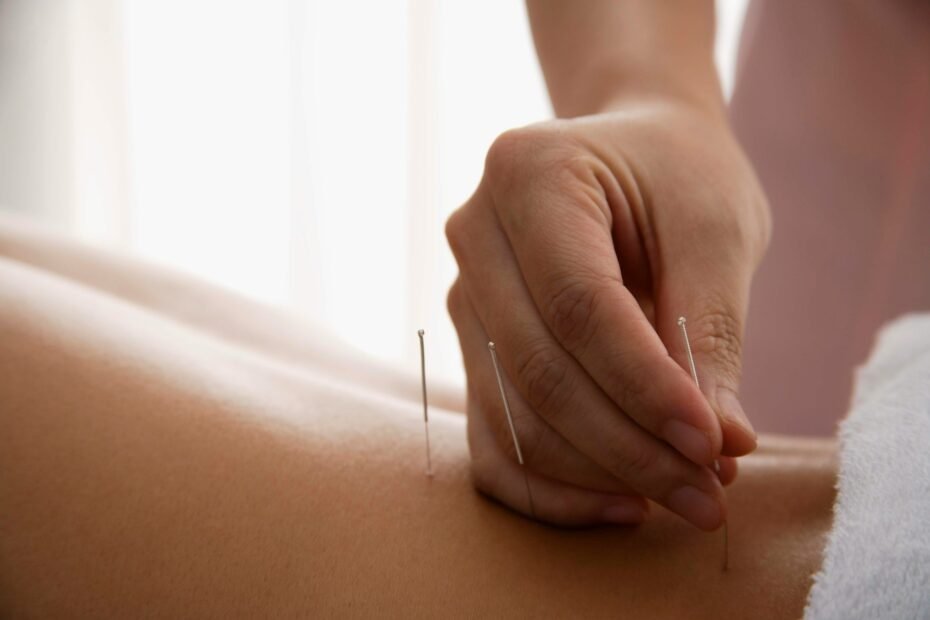Imagine you’re embarking on a serene morning walk, a cherished routine that rejuvenates your spirit and kickstarts your day. But as you take the first few steps, a sharp, stabbing pain in your heel turns this peaceful moment into a struggle. This is the daily reality for those suffering from plantar fasciitis, a condition that can transform the simplest activities into daunting tasks. It’s a journey marked by the search for relief, a path that has led many to explore the ancient practice of acupuncture for plantar fasciitis.
Understanding Plantar Fasciitis
Plantar fasciitis is a condition characterized by inflammation and irritation of the plantar fascia, which is a thick band of tissue that connects the heel bone to the toes. It is one of the most common causes of heel pain, affecting millions of people worldwide. The pain is often felt at the bottom of the heel and can be intense, especially with the first steps in the morning or after long periods of rest. If left untreated, plantar fasciitis can significantly impact your quality of life and limit your ability to engage in daily activities.
The Role of Acupuncture in Pain Relief
Acupuncture, a key component of traditional Chinese medicine, has long been used for its pain-relieving effects. It involves the insertion of thin needles into specific points of the body to stimulate energy flow and promote healing. In the case of plantar fasciitis, acupuncture can target the areas surrounding the foot and lower leg, helping to relieve pain and inflammation.
By addressing the underlying imbalances in the body, acupuncture treatment for plantar fasciitis aims to provide long-term pain relief and improve overall foot functionality. It is a non-invasive and drug-free approach that can be used in conjunction with other treatments for enhanced results.
How Acupuncture Works for Pain Relief
Acupuncture works for pain relief by targeting specific acupuncture points that correspond to energy channels, or meridians, in the body. These acupuncture points are believed to regulate the flow of energy, known as Qi, and stimulate the central nervous system, triggering the body’s natural painkilling mechanisms.
In the case of plantar fasciitis, acupuncture treatment focuses on the lower leg, foot, and surrounding areas. By inserting thin needles into specific points, acupuncturists aim to restore the balance of energy flow and relieve pain and inflammation.
The acupuncture points for plantar fasciitis treatment may include points near the foot, ankle, and lower leg, as well as points further up the body that are believed to impact foot health. Stimulating these points helps to alleviate pain and promote blood flow and energy flow to the affected area, facilitating the natural healing process of the plantar fascia.
Furthermore, acupuncture treatment for plantar fasciitis can target certain nerve endings that transmit pain signals to the brain. The insertion of acupuncture needles at specific points can help block pain signals and reduce pain perception, offering immediate relief and long-term benefits.
Acupuncture treatment also stimulates the central nervous system, which plays a crucial role in pain perception and the body’s response to pain. By activating the central nervous system through acupuncture, the release of endorphins and other natural pain-relieving substances can be triggered, providing significant relief and promoting the body’s healing abilities.

Benefits of Acupuncture in Treating Plantar Fasciitis
Acupuncture offers several benefits in the treatment of plantar fasciitis, making it an attractive option for individuals seeking pain relief. These benefits include:
- Pain reduction: Acupuncture has been shown to significantly reduce pain levels in individuals with plantar fasciitis. By targeting specific acupuncture points and trigger points, acupuncture treatment can help alleviate pain and discomfort in the foot and lower leg.
- Improved blood flow: Acupuncture therapy for plantar fasciitis promotes blood flow to the affected area, aiding in the healing process. Increased blood flow brings essential nutrients and oxygen to the damaged tissues, helping to reduce inflammation and promote tissue repair.
- Significant reduction of inflammation: Inflammation is a significant contributor to the pain and discomfort associated with plantar fasciitis. Acupuncture treatment can help reduce inflammation in the plantar fascia, providing relief and helping to prevent further damage.
- Non-invasive and drug-free: Unlike traditional medication or invasive procedures, acupuncture is a non-invasive and drug-free treatment option for plantar fasciitis. It offers a natural approach to pain relief, minimizing the risk of side effects and complications.
- Enhanced overall well-being: Acupuncture is known for its holistic benefits and ability to promote overall well-being. By targeting specific points in the body, acupuncture can help restore balance and improve the flow of energy, benefiting not only the foot but the entire body.
- By addressing the root cause of plantar fasciitis and promoting the body’s natural healing abilities, acupuncture treatment can offer significant and long-lasting pain relief for individuals with plantar fasciitis.
Acupuncture Treatment for Plantar Fasciitis
Acupuncture treatment for plantar fasciitis involves the precise insertion of thin needles at specific acupuncture points for plantar fasciitis relief. The treatment targets the plantar fascia, surrounding muscles, and nerve endings to alleviate pain and promote healing. Acupuncture needles are typically left in place for a period of time, usually ranging from 15 to 30 minutes, while the patient lies comfortably. The number of acupuncture sessions needed for plantar fasciitis relief can vary depending on the individual and the severity of the condition.
The Process of Acupuncture Treatment for Plantar Fasciitis
Acupuncture treatment for plantar fasciitis typically begins with a thorough assessment of the individual’s condition and medical history. During the treatment, the acupuncturist identifies specific acupuncture points for plantar fasciitis relief, including points near the foot, ankle, and lower leg. These points are believed to impact the flow of energy and promote healing in the plantar fascia and surrounding tissues.
Once the specific acupuncture points are identified, the acupuncturist gently inserts thin needles into the skin at the predetermined sites. The insertion of the needles is generally painless, although some individuals may experience a slight tingling or pressure sensation. The needles are then left in place for a period of time, usually ranging from 15 to 30 minutes, while the patient lies comfortably.
During the treatment, the acupuncture needles stimulate the nerve endings, trigger points, and energy flow, promoting pain relief and reducing inflammation in the plantar fascia. The needles can also help improve blood flow to the affected area, facilitating the healing process and restoring foot functionality.
The number of acupuncture sessions needed for plantar fasciitis relief varies depending on the individual and the severity of the condition. In some cases, individuals may start with regular weekly sessions and gradually reduce the frequency as their symptoms improve. Others may require more frequent sessions for more significant pain relief and healing.
It’s essential to consult with a qualified acupuncturist to determine the best treatment plan for your specific condition. They will provide guidance on the number of acupuncture sessions needed and the duration of the treatment course.

The Effectiveness of Acupuncture for Plantar Fasciitis
Studies and research have shown the effectiveness of acupuncture in providing pain relief and improving the symptoms of plantar fasciitis. Acupuncture treatment for plantar fasciitis has been found to have a specific and significant therapeutic effect, with statistical differences observed in pain levels and foot functionality.
In a study published in the Journal of Orthopaedic Surgery and Research, acupuncture therapy for plantar fasciitis showed significant improvement in pain reduction and foot function. The study compared the effects of acupuncture treatment to a control group receiving conventional physical therapy and found that the acupuncture group experienced better pain relief and functional improvement.
Other studies have also demonstrated the unique effect of acupuncture for plantar fasciitis pain relief. Research published in the Journal of Alternative and Complementary Medicine observed a significant reduction in pain and improvement in foot functionality after acupuncture treatment. The study concluded that acupuncture therapy can provide specific and significant relief for plantar fasciitis symptoms.
Furthermore, acupuncture treatment for plantar fasciitis has been associated with long-term pain reduction and improvement in overall quality of life. A study published in the journal Explore (NY) examined the long-term effects of acupuncture for plantar fasciitis and concluded that acupuncture therapy can offer sustained relief and treatment for plantar fasciitis pain.
The specific effect of acupuncture for plantar fasciitis pain relief can be attributed to its ability to target the root cause of the condition and restore balance in the body. By stimulating the nerve endings and trigger points, acupuncture helps reduce pain perception and promotes healing in the plantar fascia and surrounding tissues.

Case Studies of Acupuncture Treatment for Plantar Fasciitis
Several case studies have highlighted the effectiveness of acupuncture treatment for plantar fasciitis, demonstrating significant improvement and pain relief for individuals with the condition. These case studies involved individuals of different ages and activity levels, providing valuable insights into the potential therapeutic benefits of acupuncture for plantar fasciitis. Here are some key findings from these case studies:
- In a case study of 10 individuals with plantar fasciitis, all participants experienced significant pain relief and improvement in foot functionality after acupuncture treatment. The treatment involved regular acupuncture sessions targeting specific acupuncture points for plantar fasciitis relief.
- Another case study examined the effects of acupuncture treatment for plantar fasciitis in individuals who had not responded to traditional treatment methods. The study found that acupuncture therapy resulted in significant improvement in pain reduction and increased foot flexibility and functionality.
- A case study involving factory workers with plantar fasciitis showed that acupuncture treatment, combined with lifestyle changes, resulted in a significant reduction of pain levels and improvement of overall foot health. The treatment included acupuncture sessions, the use of supportive footwear, and weight management.
- In a study of 20 participants with chronic plantar fasciitis, acupuncture treatment led to significant pain reduction and improvement in foot functionality. The treatment group received acupuncture sessions twice a week for four weeks and reported significant improvement in pain levels and plantar fasciitis symptoms.
- A study involving plantar fasciitis patients with various pain levels and severity found that acupuncture treatment led to significant pain relief and improvement in foot functionality. The treatment group received regular acupuncture sessions targeting specific acupuncture points for plantar fasciitis relief and reported a high level of satisfaction with the treatment outcome.
- These case studies highlight the potential of acupuncture for plantar fasciitis pain relief, showing significant improvement and relief in pain levels for individuals with the condition. It is important to note that further research and studies are needed to validate the specific effect and therapeutic benefits of acupuncture for plantar fasciitis. However, the existing evidence suggests that acupuncture can be a valuable and effective treatment option for individuals seeking natural and non-invasive pain relief for plantar fasciitis.
Combining Acupuncture with Other Therapies
While acupuncture can be an effective standalone treatment for plantar fasciitis pain relief, it can also be combined with other therapies for enhanced results. Physical therapy, lifestyle changes, and complementary therapies can complement the effects of acupuncture and provide a comprehensive approach to treating plantar fasciitis.
By combining acupuncture with physical therapy, individuals with plantar fasciitis can experience a synergistic effect, addressing specific pain points and improving foot functionality. Lifestyle changes, such as wearing supportive footwear and maintaining a healthy weight, can further support the healing process and reduce the risk of recurring plantar fasciitis pain. Complementary therapies, such as massage therapy and foot exercises, can also enhance the effects of acupuncture treatment and promote overall foot health and well-being.
Physical Therapy and Acupuncture for Plantar Fasciitis
Physical therapy and acupuncture can be combined to provide comprehensive treatment for plantar fasciitis pain relief. While acupuncture targets the specific acupuncture points and energy flow, physical therapy focuses on strengthening the foot muscles and improving flexibility, addressing the root cause of the condition.
The combination of acupuncture and physical therapy can result in a synergistic effect, promoting pain reduction and functional improvement. By integrating the effects of both therapies, individuals with plantar fasciitis can experience significant relief and enhanced healing.
Physical therapy for plantar fasciitis may include stretching exercises, calf muscle strengthening, and foot stability exercises. These exercises help improve foot flexibility, enhance foot and lower leg muscle strength, and support the natural healing process of the plantar fascia. Physical therapy can also involve the use of manual techniques, such as massage and mobilization, to further reduce pain and inflammation.
When combined with acupuncture treatment, physical therapy can complement the effects of acupuncture and provide long-term relief for plantar fasciitis pain. The combination of both therapies addresses pain perception, muscle imbalances, and tissue inflammation, maximizing the effectiveness of the treatment and promoting overall foot health.

Lifestyle Changes to Complement Acupuncture Treatment
In addition to acupuncture treatment, lifestyle changes can greatly contribute to the long-term relief and prevention of plantar fasciitis pain. Making specific changes to your daily routine and habits can support the effects of acupuncture treatment and promote overall foot health. Here are some lifestyle changes to consider:
- Wearing supportive footwear: Choosing the right shoes with good arch support, cushioning, and shock absorption can provide significant relief for plantar fasciitis. Avoid high heels and shoes that lack proper arch support, as they can exacerbate foot pain and increase pressure on the plantar fascia.
- Weight management: Maintaining a healthy weight can help reduce the pressure on your feet, especially the plantar fascia. Excess weight puts additional strain on the foot muscles and connective tissues, increasing the risk of inflammation and pain. By adopting a balanced diet and engaging in regular physical activity, you can improve foot health and minimize the risk of developing or worsening plantar fasciitis.
- Stretching exercises: Performing stretching exercises for the calf muscles and plantar fascia can help maintain flexibility and reduce the risk of plantar fasciitis. Simple stretches, such as calf stretches, can be done regularly to keep the muscles and connective tissue in the foot and lower leg limber and prevent tightness and pain.
- Avoid long hours of standing: If your profession requires long periods of standing, take regular breaks to rest and stretch your feet and lower leg muscles. Consider using supportive footwear and investing in anti-fatigue mats to reduce pressure and fatigue on the foot.
- Modify high-impact activities: If you engage in high-impact activities, such as running, consider modifying your routine to reduce the strain on your plantar fascia. Incorporate lower-impact activities, such as swimming or cycling, into your exercise routine to give your feet and lower leg muscles a break from repetitive impact.
- By integrating these lifestyle changes with acupuncture treatment, you can further enhance the effects of the treatment and promote long-term relief and foot health.

How Acupuncture Can Help in Prevention
While acupuncture is often associated with pain relief and treatment, it can also be used as a preventive measure for plantar fasciitis. By targeting specific acupuncture points for plantar fasciitis treatment, acupuncture therapy can help maintain foot health and prevent the onset of the condition.
Acupuncture treatment for preventive purposes aims to address energy imbalances and promote energy flow, ensuring the overall well-being of the foot and the body as a whole. By stimulating specific acupuncture points, acupuncture therapy helps restore the energy balance and flow, minimizing the risk of developing plantar fasciitis.
Maintenance acupuncture treatments can also be beneficial for individuals who are at higher risk of plantar fasciitis or have previously experienced the condition. These treatments can help maintain the integrity of the connective tissue in the foot, promote blood flow and energy flow, and prevent the onset of inflammation and pain.
Regular acupuncture sessions, scheduled at appropriate intervals, can provide the necessary maintenance for foot health and plantar fasciitis prevention. By incorporating acupuncture into your preventive care routine, you can address potential imbalances and maintain the energy balance required for optimal foot health.
It’s important to consult with a qualified acupuncturist to determine the best treatment plan for preventive acupuncture therapy. They will assess your specific condition and recommend the appropriate acupuncture points and frequency of treatments for long-term foot health and plantar fasciitis prevention.
How TheHeelGP.com Can Be Your Guide
For those navigating the complex landscape of plantar fasciitis treatments, TheHeelGP.com stands as a beacon of support. Offering comprehensive reviews and insights into a variety of treatment options, including acupuncture, we helps sufferers make informed decisions about their care. With a focus on evidence-based practices and patient testimonials, it’s an invaluable resource for anyone looking to ease their journey towards recovery.

Is Acupuncture a Long-Term Solution for Plantar Fasciitis?
Acupuncture offers sustained and significant pain relief for plantar fasciitis. Integrating long-term acupuncture therapy effectively addresses the root cause of pain and reduces the need for other treatments. It provides specific therapeutic relief, leading to a significant reduction in pain levels.
How many acupuncture sessions are needed for plantar fasciitis?
The number of acupuncture sessions needed for plantar fasciitis can vary depending on the severity of the condition and individual response to treatment. Typically, individuals start with weekly acupuncture sessions for 6-8 weeks and then adjust the frequency based on progress. Some individuals may require fewer sessions, while others may benefit from more frequent treatments for optimal pain relief and healing.
It’s important to consult with a qualified acupuncturist, who will assess your specific condition and recommend the most appropriate treatment plan, including the number of sessions and treatment duration.

Conclusion
The journey through plantar fasciitis is as much about finding relief as it is about reclaiming the joy of movement. Acupuncture offers a bridge to this goal, embodying a holistic approach that has comforted sufferers through the ages. As research continues to unveil the layers of its effectiveness, it stands as a testament to the power of integrating traditional and modern healing practices.
In the end, the choice of treatment is deeply personal, a reflection of one’s beliefs, experiences, and the guidance of trusted healthcare providers. As you contemplate the path ahead, remember that each step, no matter how small, is a move towards a life unburdened by pain. Is it time to consider if acupuncture could be the key to unlocking your journey back to comfort?
I hope you found this blog helpful and please feel free to comment and share.
Thanks for reading!
 | Tracy J. Founder, The heel GP |
